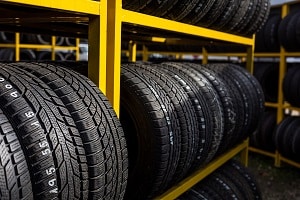Tire Substitute: The Art of Choosing the Right Tire Size
Selecting the appropriate tire size is an essential aspect of preserving ideal efficiency and security for your vehicle. The complex process of picking the right tire dimension includes even more than just an arbitrary selection from a checklist of choices. It needs a thoughtful consideration of numerous elements that can significantly influence your driving experience. From comprehending just how tire size specs are identified to acknowledging the effects of inaccurate dimensions on your vehicle's handling and effectiveness, the trip to discovering the perfect tire dimension is a nuanced one. Keep tuned to decipher the intricacies and subtleties of tire replacement, as we discover the art of making the right choice for your automobile.
Relevance of Correct Tire Dimension
Picking the appropriate tire dimension is critical for making certain optimal efficiency, safety, and effectiveness of your vehicle. One of the crucial factors why tire size issues is because it impacts the total handling of your car. In terms of safety, having the right tire dimension ensures that your automobile can effectively hold the roadway, brake successfully, and maneuver smoothly to prevent accidents.
Aspects Affecting Tire Dimension Option
An essential factor to consider in identifying the proper tire dimension for your lorry is understanding the numerous aspects that influence this choice. One critical element is the maker's advised tire dimension. This details can typically be found in the owner's handbook or on a sticker inside the motorist's side door jamb. Drifting from the recommended tire size can impact the speedometer precision, fuel effectiveness, and general efficiency of the automobile.
If you often drive off-road or in difficult weather condition conditions, you may require a tire with a different size or step pattern contrasted to someone that primarily drives on highways. The terrain you drive on likewise plays a role in figuring out the suitable tire size.
Additionally, the dimension of your wheels can limit the choices for tire sizes. It's important to guarantee that the tires you pick work with your wheels to protect against any safety and security hazards or efficiency problems. By carefully taking into consideration these elements, you can choose the right tire size that ideal fits your driving requirements and lorry requirements.
Comprehending Tire Dimension Specifications
Tire dimension requirements offer crucial information relating to the measurements and characteristics of a tire. In this example, "P" signifies the tire type, "215" represents the tire size in millimeters, "65" is the facet proportion (the proportion of the tire's height to its size), and "15" shows the diameter of the wheel in inches that the tire is developed to fit.
In addition, tire size requirements may consist of tons index and rate rating. The tons index indicates the maximum gmc tire service weight a tire can sustain, while the rate rating indicates the optimal rate ability of the tire. By understanding these specs, you can make sure that the tires you choose work with your lorry's demands and provide optimum performance and security on the road.
Impacts of Incorrect Tire Dimension

Wrong tire dimensions can also influence gas efficiency. Making use of tires that are not fit for your lorry can modify the speedometer reading, bring about incorrect gas mileage estimations. In addition, dissimilar tire dimensions can place extra strain on the engine and transmission, possibly lowering the overall fuel economy of the vehicle.

Tips for Choosing the Right Tire Dimension
Choosing the suitable tire size for your car is essential for making sure optimal performance and safety on the road. To help in picking the best tire dimension, consider the adhering to tips - gmc tire service. Always refer to your lorry producer's recommendations. These requirements are meticulously chosen to offer the most effective balance of handling, traction, and convenience for your particular vehicle model. Secondly, consider the typical driving conditions you run into. For instance, if you often drive in snowy or icy conditions, a tire with a different dimension or walk pattern may be required to guarantee ample grasp. Furthermore, consider your driving habits and preferences. Picking a tire dimension that matches your motoring style can boost your total driving experience if you focus on a smooth and quiet trip. Lastly, consult with a professional tire specialist. They can provide experienced guidance based upon your automobile, driving demands, and neighborhood climate problems to aid you make an educated choice. By adhering to these pointers, you can select the appropriate tire size to optimize your automobile's performance and safety and security.
Verdict
In conclusion, choosing the proper tire dimension is vital for ensuring optimum efficiency and safety of a car. Variables such as automobile type, driving problems, and supplier referrals must be considered when choosing the ideal tire dimension.
From comprehending just how tire size specifications are established to recognizing the impacts of wrong dimensions on your lorry's handling and performance, the journey to finding the excellent tire size is a nuanced one.Tire dimension requirements provide vital info regarding the dimensions and characteristics of a tire. The tire dimension is usually shown on the sidewall of the tire and is stood for by a mix of numbers and letters. morris tires. In this example, "P" represents the tire type, "215" represents the tire size in millimeters, "65" is the element ratio (the proportion of the tire's elevation to its size), and "15" indicates the diameter of the wheel in inches that the tire is made to fit
Tires that are also tiny may result in minimized security, particularly during high-speed maneuvers, while oversized tires can cause scrubing against the vehicle's body elements, leading to potential damage.